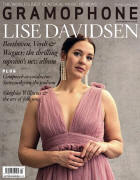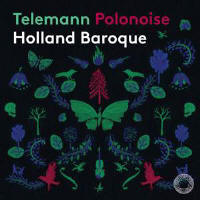Texte paru dans: / Appeared in: |
|
|
Outil de traduction (Très approximatif) |
|
|
Reviewer:
Mark Seow What is so hip about HIP? When Purcell is played in a pub or Handel is remixed by a DJ in a Peckham warehouse, has Historically Informed Performance accumulated so many edges that it now feels smooth to the touch? Here isn’t the place to rehash Richard Taruskin’s excellent thoughts on authenticity and newness from the 1990s. Yet when one is confronted with sparkling innovation such as this from Holland Baroque, I’m inclined to think there’s mileage in the question still. Holland Baroque can’t compete with the fastidious research going on in Telemann studies at the moment, and nor do they try to. Which is why what they have created here, methodologically and sonically, is so fascinating. In recreating a sound world so often maligned with caricature – Telemann’s Polish style – they have opted for immersion. In the booklet notes, Judith Steenbrink writes that by living with the music, the musicians began to ‘smell the earth, the stones, and the fresh air of the Polish mountains’; each day ‘the past came to life’. This sensory vividness truly comes across. We’re taken to the tavern where shrieking, churning and groaning strings deliver performances ale-soaked in character. These moments that lack polish – sorry, not sorry – are episodic: it’s as if night after night we find ourselves back among the raucous racket, forgetful of the previous evening’s sins. The swift and often jarring changes between tracks create an incredible energy in the telling of this Polish tale; and then come the moments of sweetness. The ‘Polonesie 4’ (from TWV45) that pillows into the flatter tonal areas, that sinking sigh of the subdominant, is utterly lovely. For all this wondrous innovation, there are bound to be things that don’t quite work. I’m all for more experimental temperaments – and the idea that the ‘barbaric beauty’ Telemann encountered during his visits to Pless (now Pszczyna) in Upper Silesia was perfectly tuned in Vallotti A=415 is, of course, ludicrous – yet too much of the intonation makes for uncomfortable listening. Much of the solo playing is, simply put, flat. Perhaps persistence and acculturation are key here, and in time I’ll find even more joy beyond the immediate excitement that this album provides.
|
|




